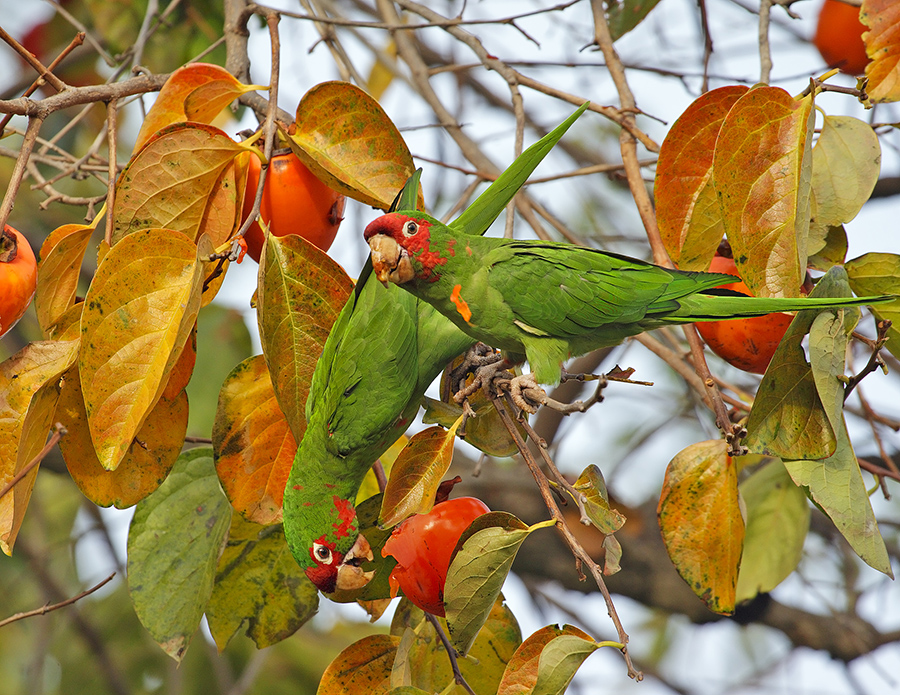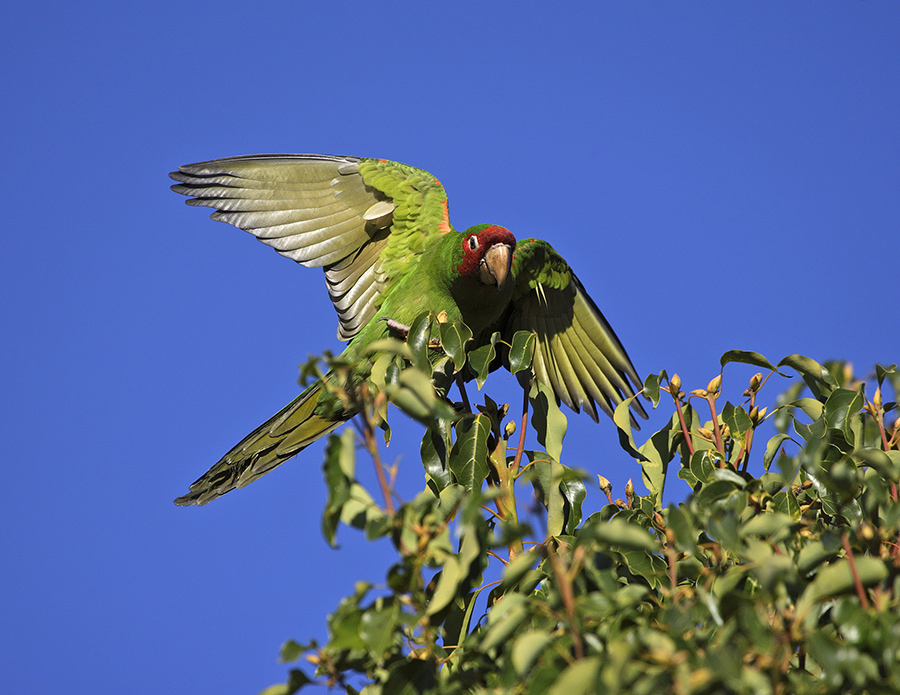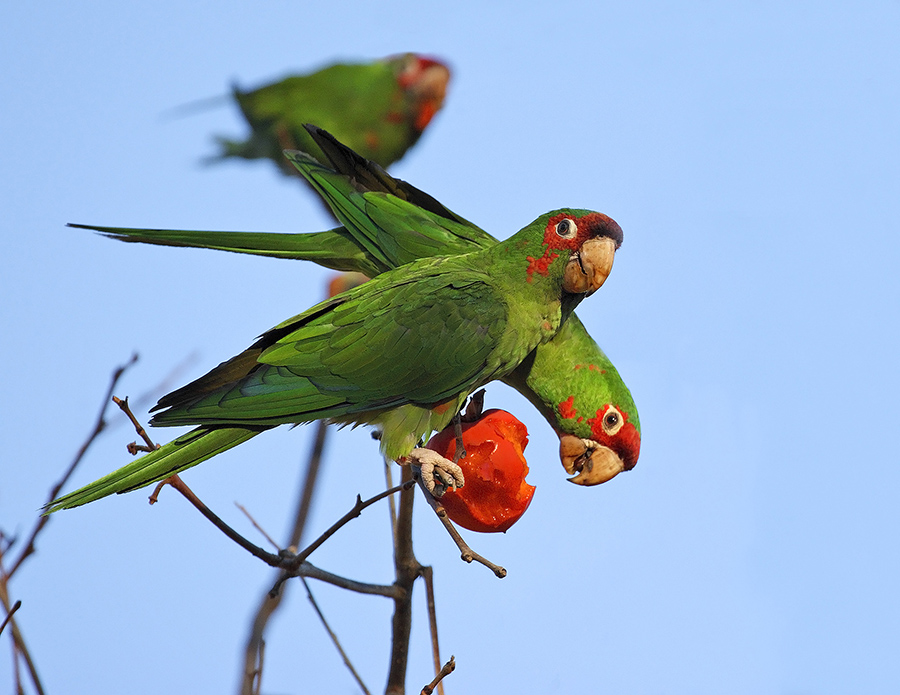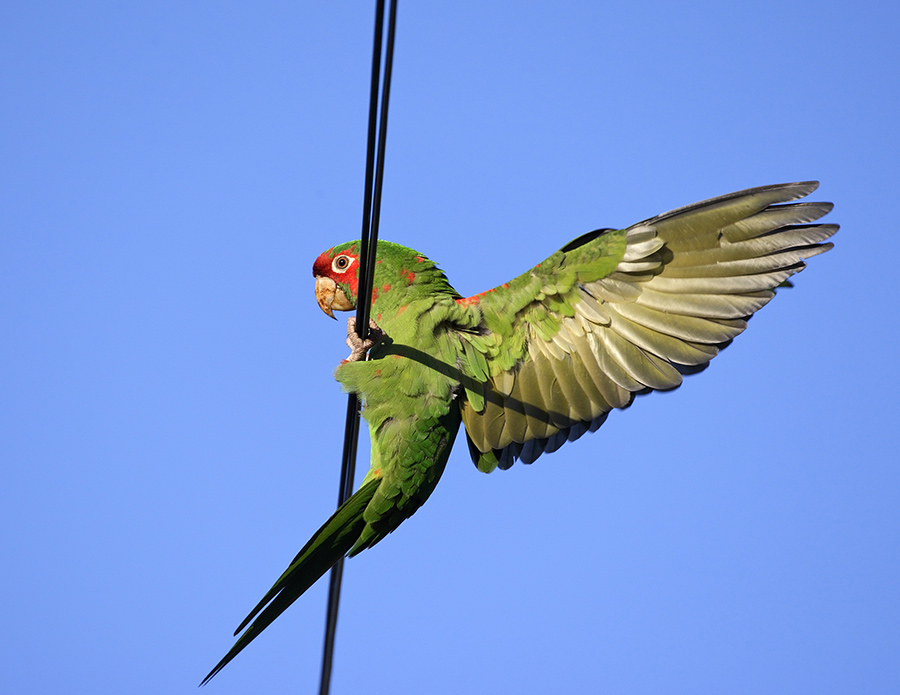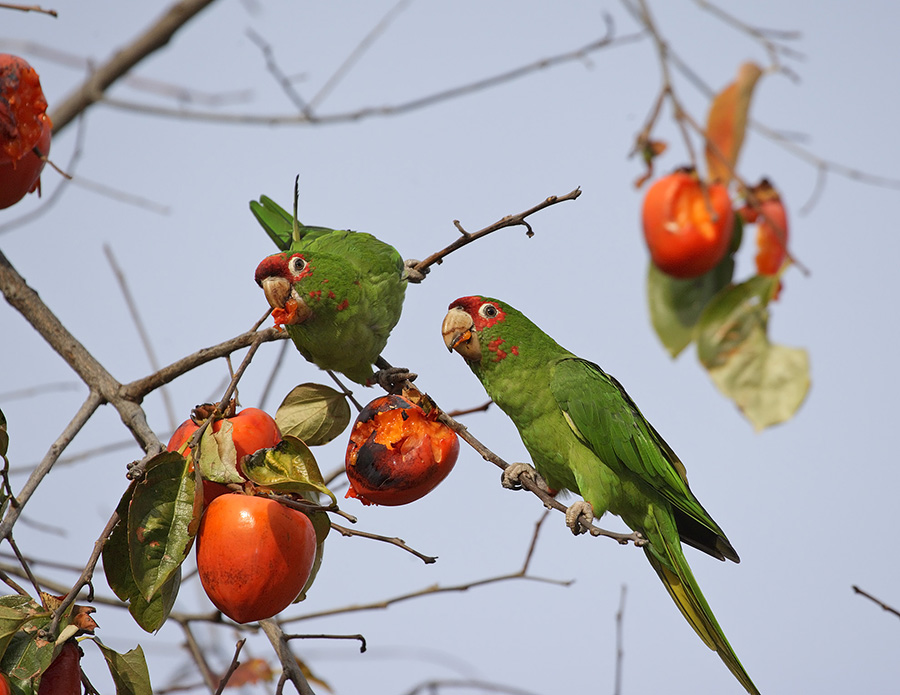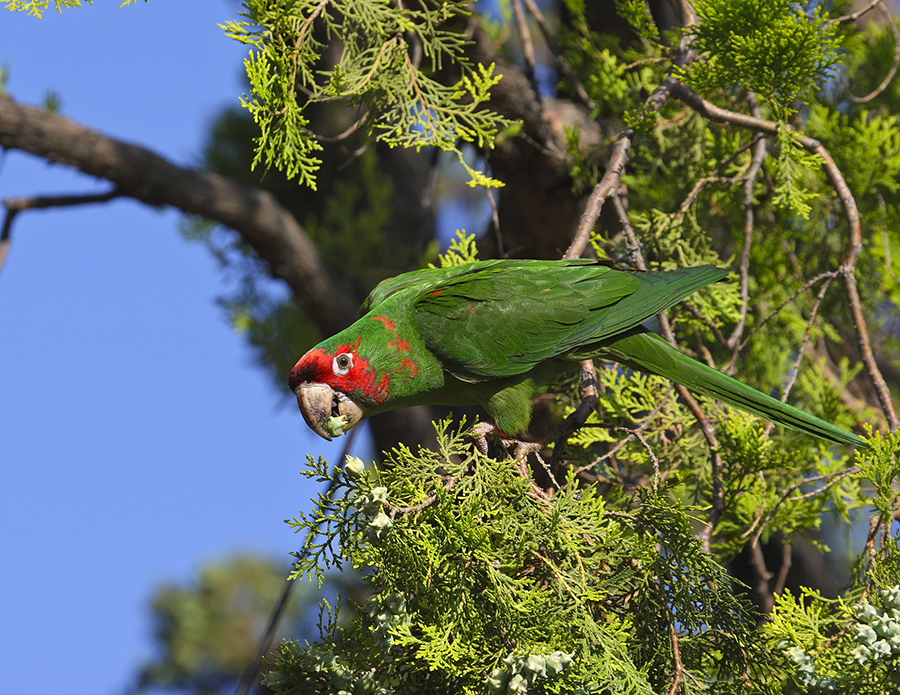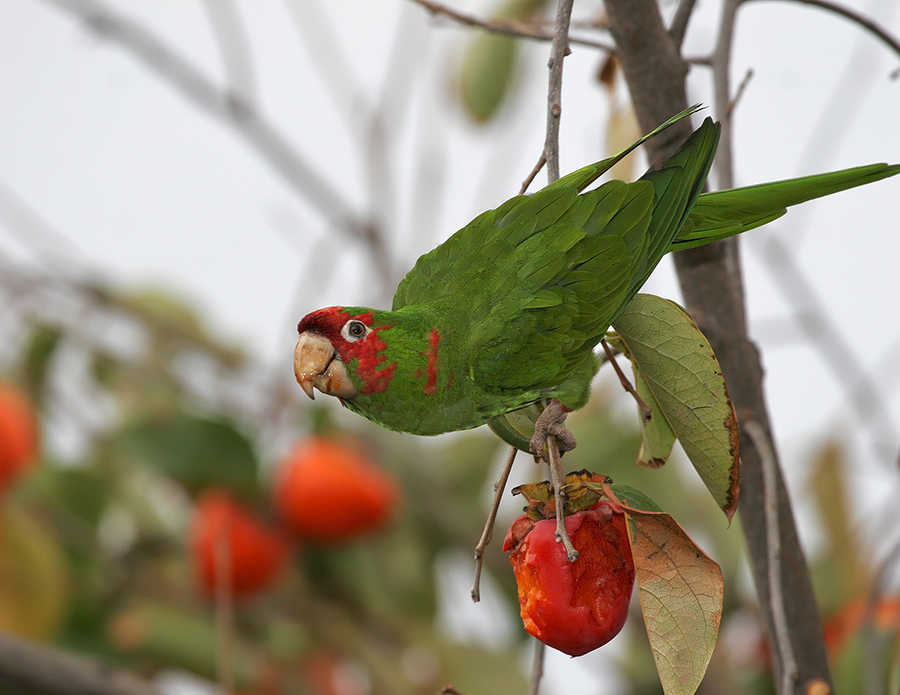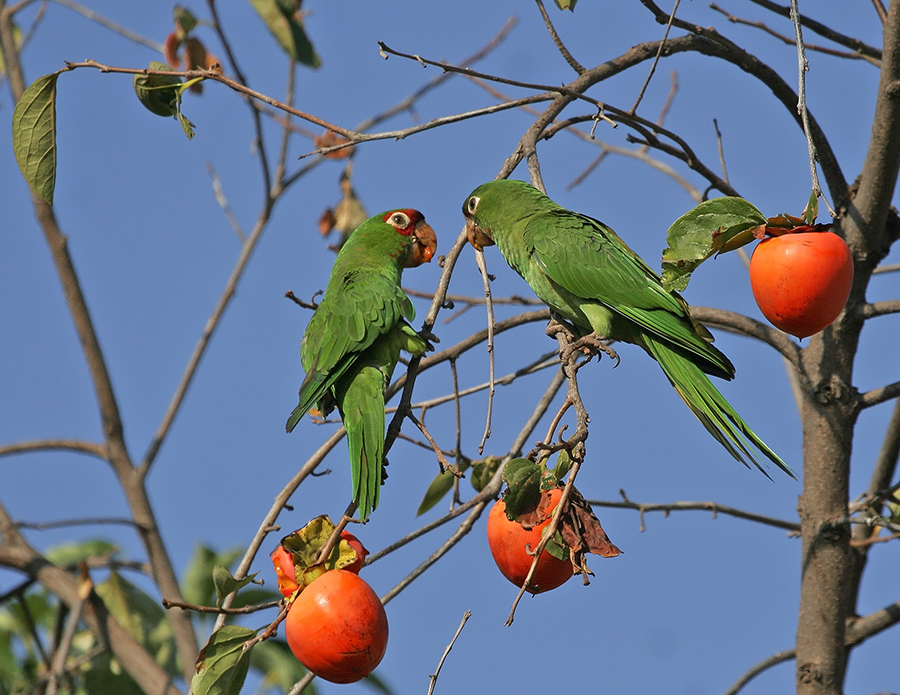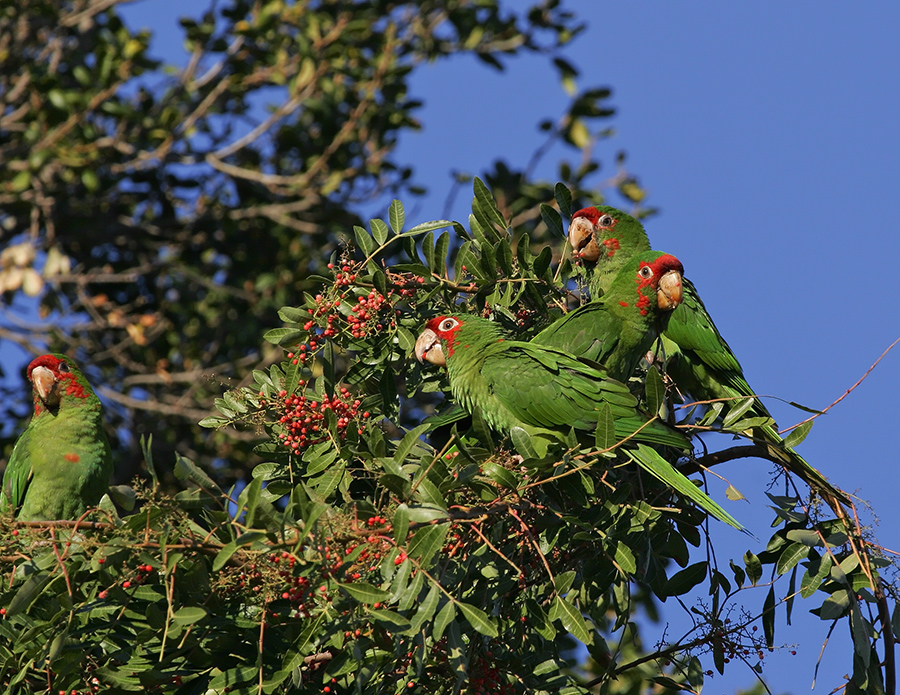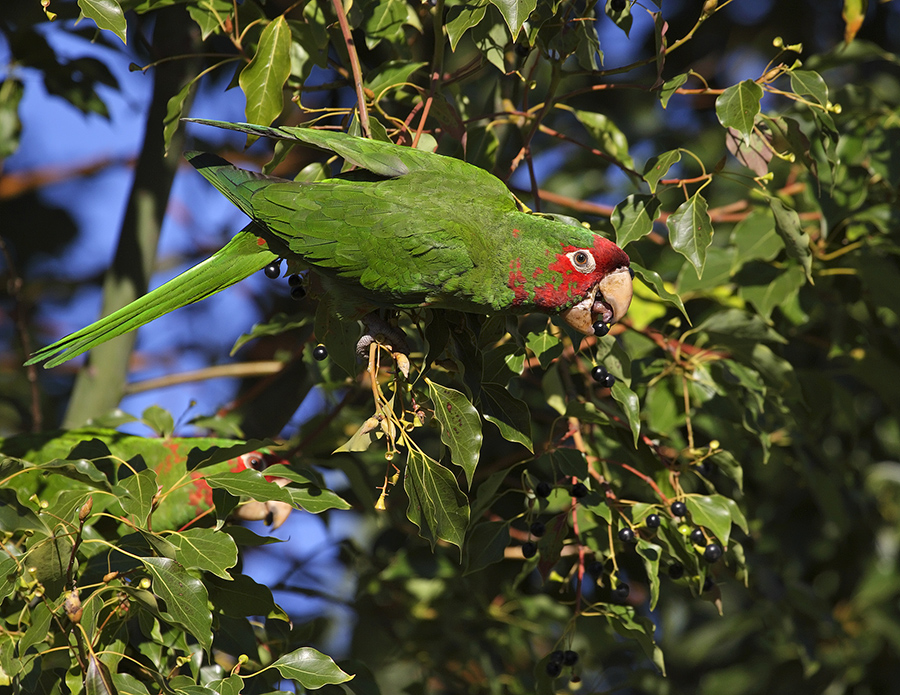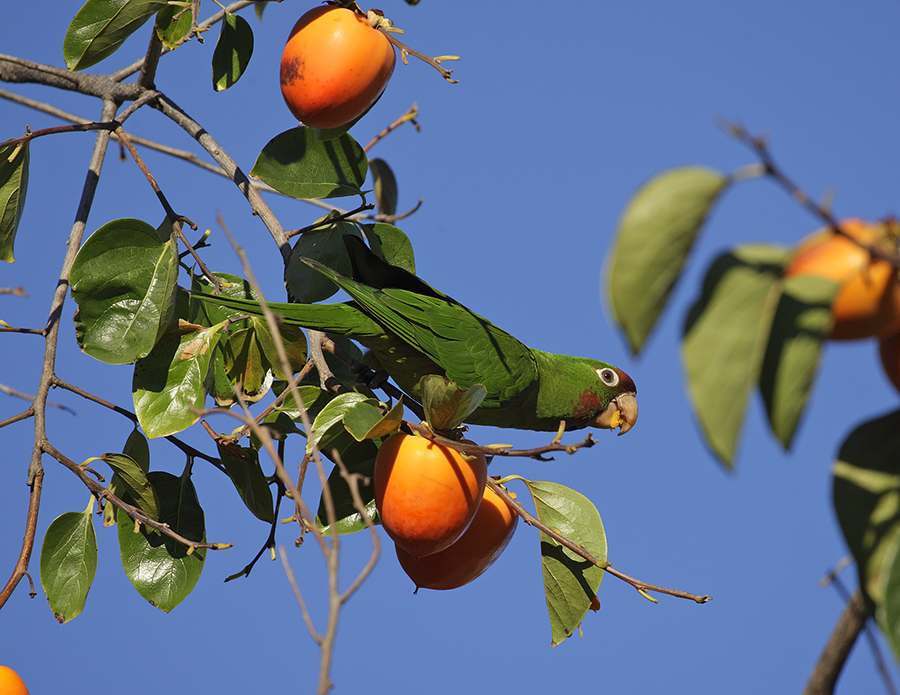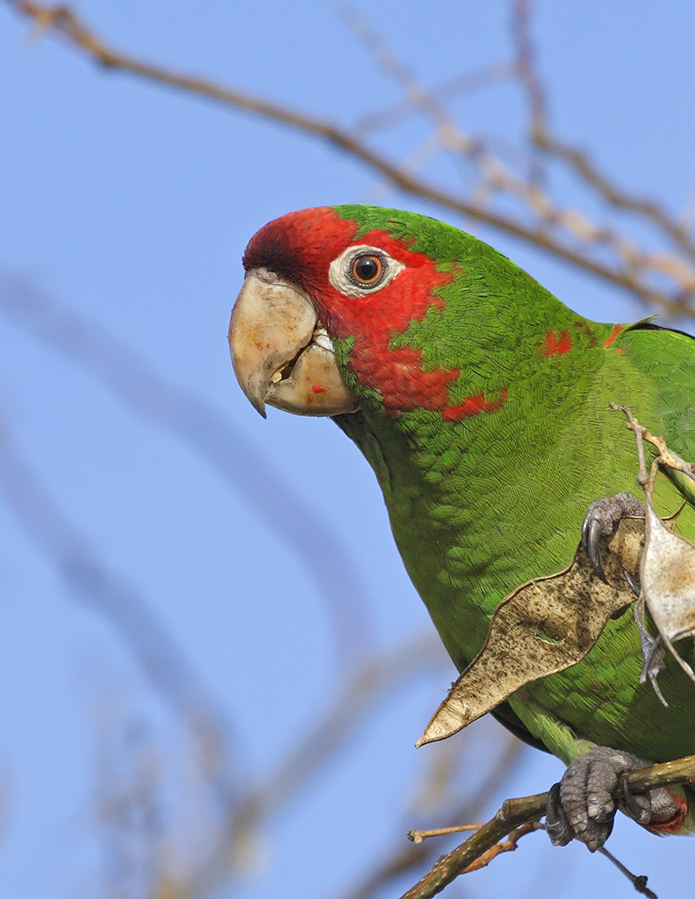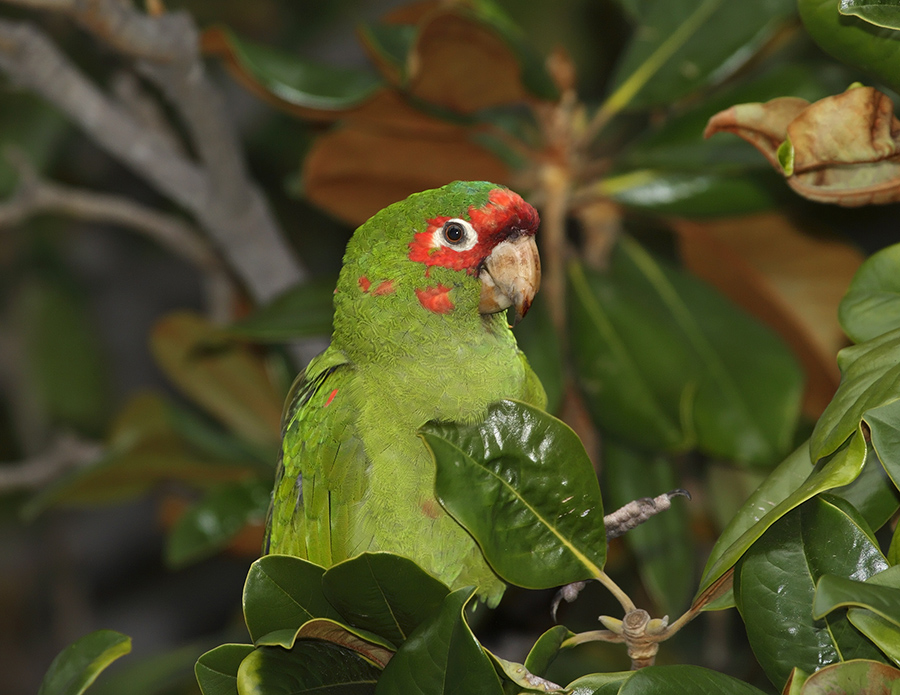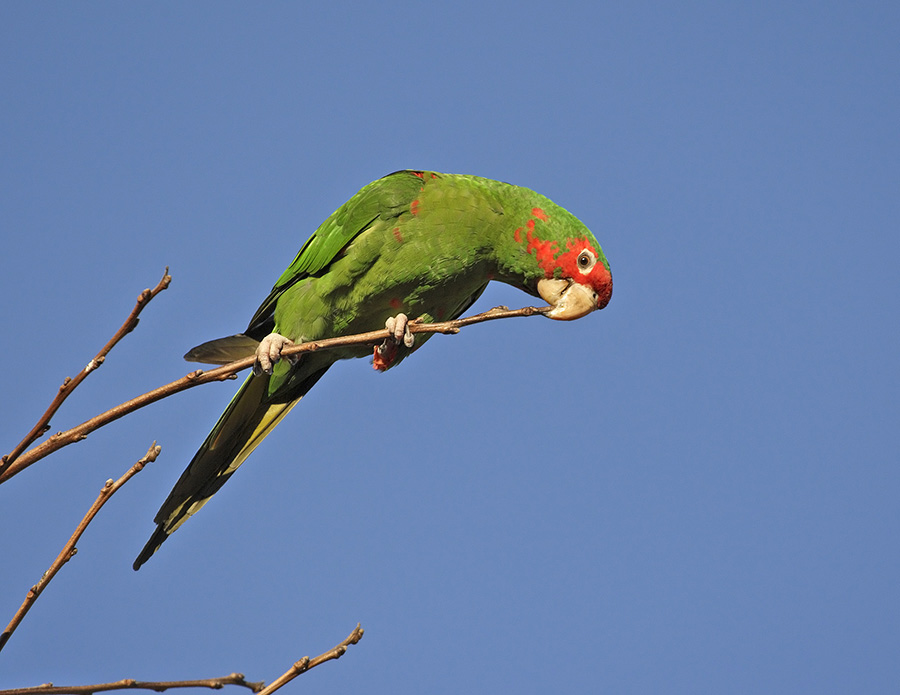Mitred Parakeet
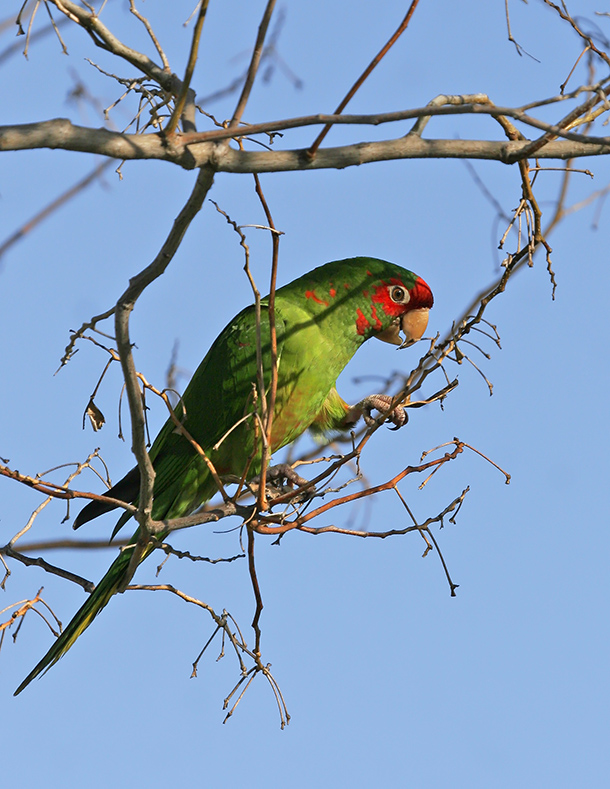
Scientific Name: Psittacara mitratus
Species Authority: (Tschudy, 1844)
Common Names:
Mitred Parakeet
Mitred Conure
Native to: Argentina, Bolivia, Peru
Status: Least Concern (IUCN)
Assessed: August 2018
In California: Flocks of mitratus can be found in San Francisco, Los Angeles, Orange and San Diego. Easily distinguishable from the Amazons by their slender body, longer tail and higher-pitched calls, the Conures are an active group and find fun in everything they do. No wonder it isn’t a surprise to find a stray Amazon among them — they are a lively lot.
The Mitred Parakeet (Psittacara mitratus), known for its vibrant green plumage and distinctive red markings on its head, is a captivating species of parrot that thrives in a variety of environments. This article delves into the habitat, diet, and distribution of these wild parrots.
Habitat and Distribution
The Mitred Parakeet is native to South America, predominantly found in the Andean regions. These birds are adaptable and can inhabit a range of environments from wooded foothills to highland forests. They are typically seen at elevations ranging from 1,000 to 3,500 meters, although some populations exist at lower altitudes.
In recent years, the Mitred Parakeet has also established feral populations in several urban areas outside its native range, including parts of the United States (such as California and Florida) and Europe. These birds have adapted remarkably well to urban environments, often seen in parks and suburban areas.
Diet
In the wild, the diet of the Mitred Parakeet is diverse, consisting mainly of seeds, fruits, berries, and occasionally flowers and nectar. They are known to forage in both trees and on the ground, often in flocks. Their ability to adapt their diet based on available resources is a key factor in their success in both native and non-native habitats.
In urban areas, these parakeets have adapted to consuming a variety of cultivated fruits and vegetables, often visiting backyard feeders. This adaptability in diet helps them thrive in a range of environments.
Environmental Impact and Conservation
The adaptability of the Mitred Parakeet means it can sometimes compete with native bird species for food and nesting sites, particularly in areas where it is an introduced species. However, in its native range, habitat loss due to deforestation is a significant threat.
Conservation efforts for the Mitred Parakeet focus on habitat preservation and controlling the spread in non-native areas to minimize ecological impact. Their status as a popular pet species also necessitates responsible pet trade practices to prevent illegal capture and trade.
The Mitred Parakeet is a resilient and adaptable bird, capable of thriving in a variety of environments. Its striking appearance and sociable nature make it a beloved species among bird enthusiasts. Understanding and respecting its role in both native and non-native ecosystems is crucial for ensuring its continued survival and minimizing its impact on local biodiversity.

